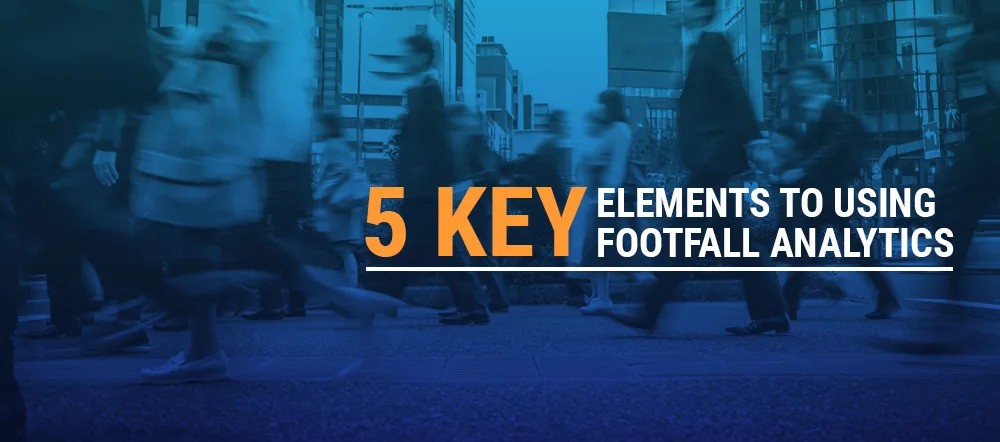

Table of Contents
Physical stores and facilities are relevant and going strong. In 2019,90 percent of retail store shopping still occurred in physical stores. Whether you operate a casino, retail store or student union, you can gain priceless insights from footfall analytics. The data provided will help you develop new plans for your business, better understand your customer base and identify areas that need growth.
In this guide, you’ll find information about what footfall analytics is and why the best businesses use it, plus the five key elements that make footfall analytics such a powerful tool for companies.
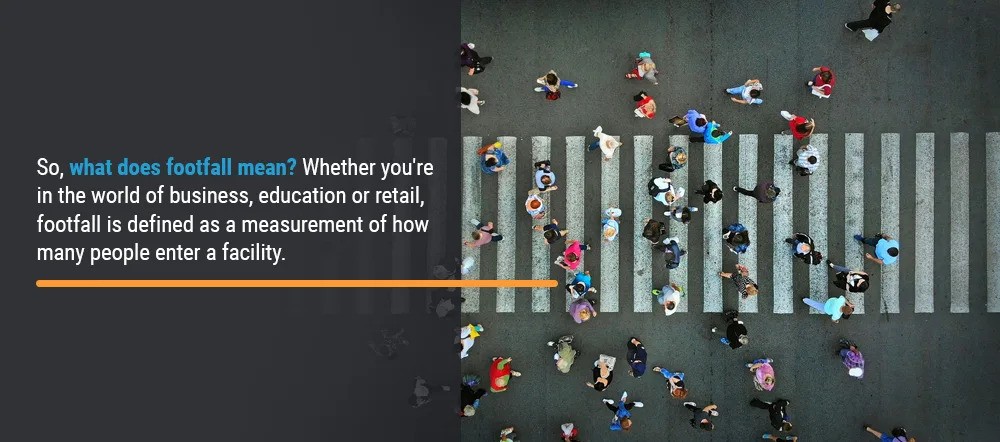
So, what does footfall mean? Whether you’re in the world of business, education or retail, footfall is defined as a measurement of how many people enter a facility. As such, footfall analytics is an advanced method for counting people who enter a store and developing insights from that info. Essentially, it’s counting technology crafted to give people an insight into customer habits and other relevant information.
In the past, companies stationed employees at the entrance of their store to count the number of people who walked through their doors. Often, these employees would have a clicker in hand to keep track of all the people entering and report their count at the end of their shift.
This older method has some downsides, as it’s very time consuming and forces staff members to stay rooted at the door to ensure they get an accurate count. Additionally, manual counting opens up the possibility of human error, with staff members becoming distracted or entering inaccurate numbers from time to time.
Footfall analytics builds on the traditional ways of counting people who enter your store by using technology to take the place of human counters. Besides just counting and tracking how many people enter their store, footfall analytics provides companies a variety of other insights. Some of these insights include information about what customers look at in your store, how they browse your store, whether they leave your store frustrated or satisfied, and information about customer psychology.
There are a variety of ways companies generate their footfall data. One popular method of collecting footfall data about people entering a store and how they navigate it relies on gathering data from WiFi and Bluetooth-enabled smartphones. These types of smartphones emit a ping while they try to find a device or router they can connect to. Some footfall analytic hardware can pick up these pings and track the shopper as they make their way through your building.
In a building, footfall analytic systems count people who enter, along with establishing where those people go while in your store or facility. This information can tell you, for example, the types of products that people tend to buy together and which areas of a store get the most traffic. Data like this can help you discover trends and take action on them.
Another popular way that businesses gather data is through the use of people-counting sensors at the front of the store. These sensors are often placed at the top of the entrance, helping to track who enters and who walks by. The sensors are more accurate at tracking how many people enter the store, since they don’t need to rely on customers having a smartphone that’s Bluetooth and WiFi-enabled.
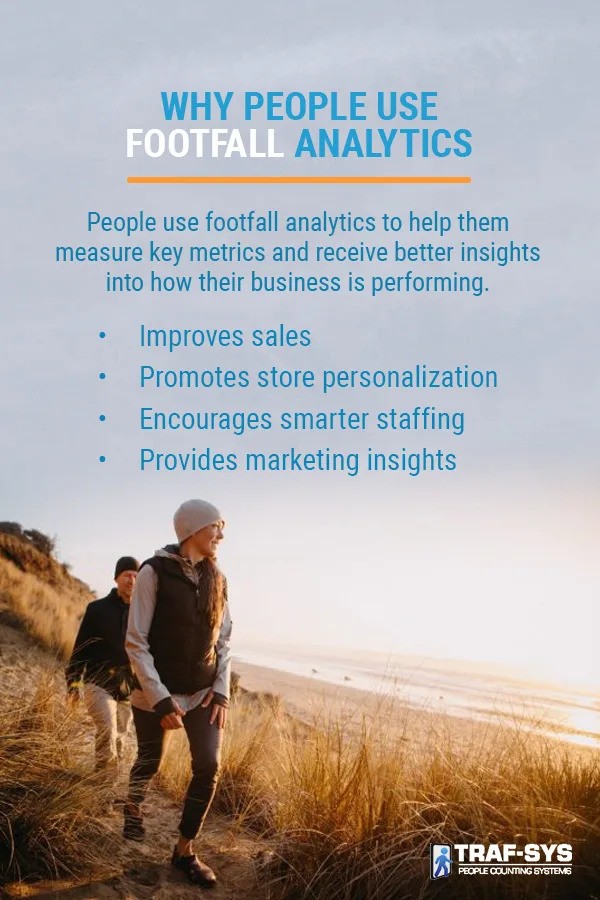

People use footfall analytics to help them measure key metrics and receive better insights into how their business is performing. If you’re unsure about why people invest in footfall analytics, consider the following benefits of using people counting systems and footfall analysis software:
If you’re interested in adding footfall analytics to your business or organization, you should understand the primary elements that companies rely on to gain in-depth insight into several factors essential to a business’s success:
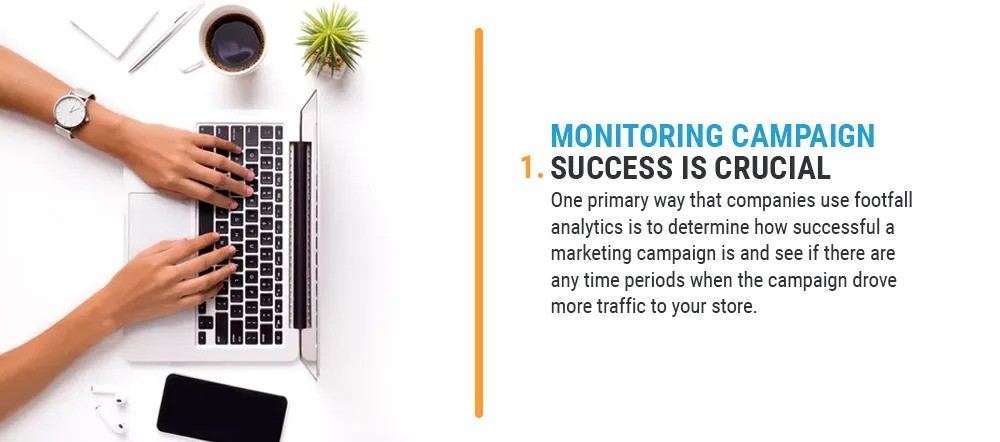

One primary way that companies use footfall analytics is to determine how successful a marketing campaign is and see if there are any time periods when the campaign drove more traffic to your store. If sales go up, you can see if they were a result of higher traffic or from improved conversation rates, providing you with insights about the effectiveness of your marketing campaign.
Having footfall analytics in your corner also gives your company the ability to look at how your company performs before, during and after a marketing campaign goes into effect. Does your traffic go up or down? Are customers staying in your store longer? You can find the answers to these questions and receive other insights by tracking who enters and where people tend to go while navigating your store.
You can gain even more data when your marketing campaign takes place inside your store. For example, you might have some in-store signs over products that you’re trying to highlight. With people counting devices throughout your store, you can determine where customers tend to stop and visit the most. With the data you gain, you might notice that your new ads are getting people’s attention, but ultimately aren’t helping to convert sales.
The information you get from footfall analytics is one of the best ways you can evaluate the success of a variety of campaigns. Over time, you’ll have a large dataset to work with that helps you compare past and present advertising efforts. This kind of information about your marketing campaigns can help you gain in-depth insights about what does and doesn’t work for your customer base.
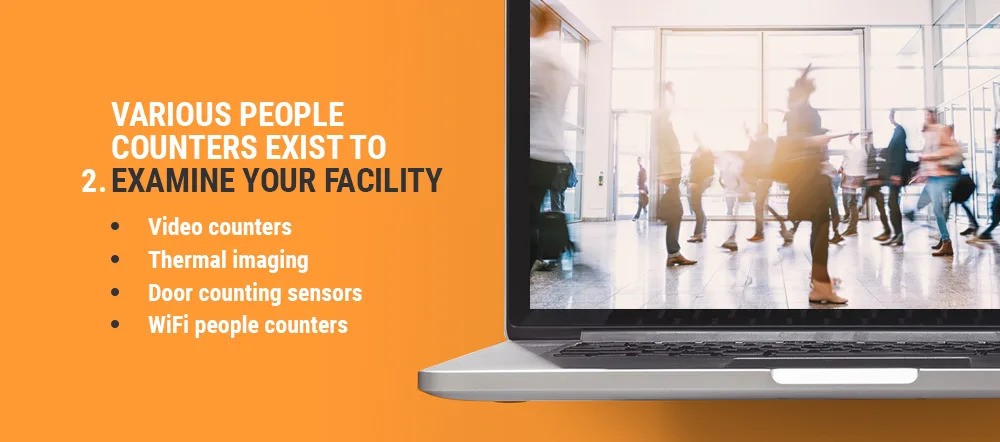

There are a few different types of people counters on the market today. Some of the three main categories include video counters, thermal imaging counters, door counting sensors and WiFi people counters. To give you a better idea of your options and the kinds that are ideal for your needs, check out some of the top people counting systems offered by Traf-Sys:
There are many different types of traffic, so you’ll need to determine which type will provide the most valuable data. For instance, do you want to capture door traffic counts per day or at shorter intervals? A full day might tell you some useful information that relates to your uptimes and downtimes, but you may already have a strong sense of this. Instead, you might want to hone in on a part of the day to find out who shops during that time.
As you determine the traffic data you want to capture, consider some of the top types of traffic that companies choose to pay special attention to:
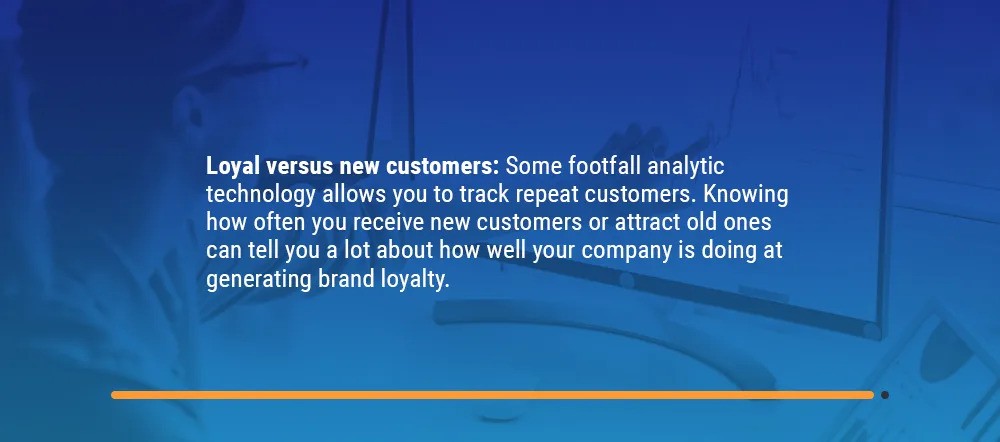
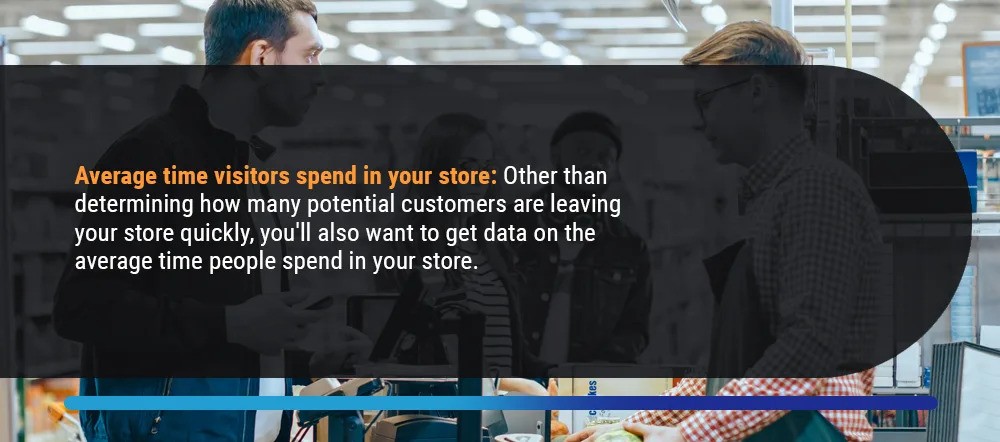

If you’re trying to improve your store or business, it’s often a good idea to start planning your improvements around customer feedback. In an ideal world, you’d have the time and the resources to interview every customer, gathering data from them about what they like most about your store, what they would change and which products they especially enjoy, among other insights. For many years, businesses had to make guesses or rely on small sample sizes when adjusting their store.
With footfall analytics, you get to interact with every customer, without having to stop to talk to them in person. A store outfitted with advanced people counting systems allows a company to gather data that provides crucial information about your customer without ever having to take the time to interview them.
Footfall data can provide you feedback from all your visitors, showing you their interests and what they tend to ignore in your store or facility. You can use this data to improve your customer engagement significantly. For example, you might want to sell a particular product that does well with a younger demographic of 18 to 29-year-olds.
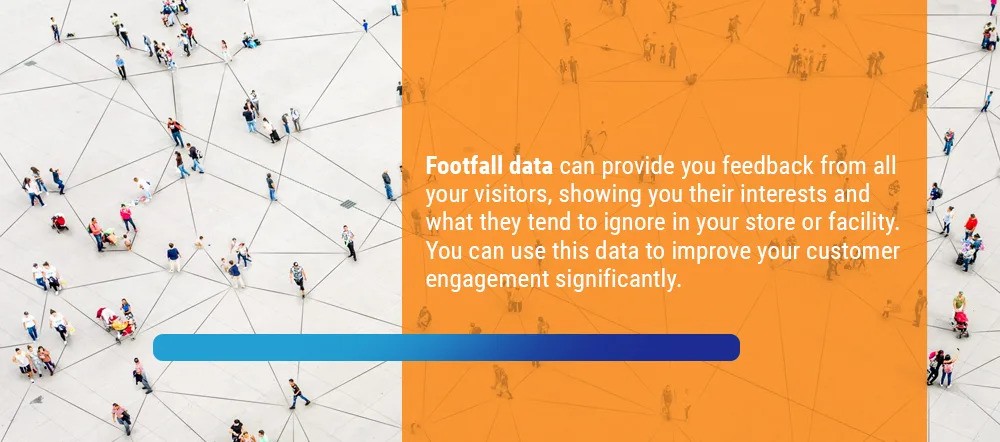

By accessing your footfall data, you might know that middle-aged people tend to visit your store during weekdays, while your target demographics arrive in greater numbers over the weekend. To take advantage of this info, you can implement targeted advertisements for the product at the time, when it’s most likely that those in the target demographic will be visiting your store.
Without having to guess or engage in lengthy interviews with customers, you’ll know when customers are going to want to see specific advertisements and what products will most appeal to them. This data lets you tailor your location to the desires of a consumer, potentially increasing customer engagement and creating a positive image of your organization in their minds. In short, footfall data lets you better understand your base of customers.
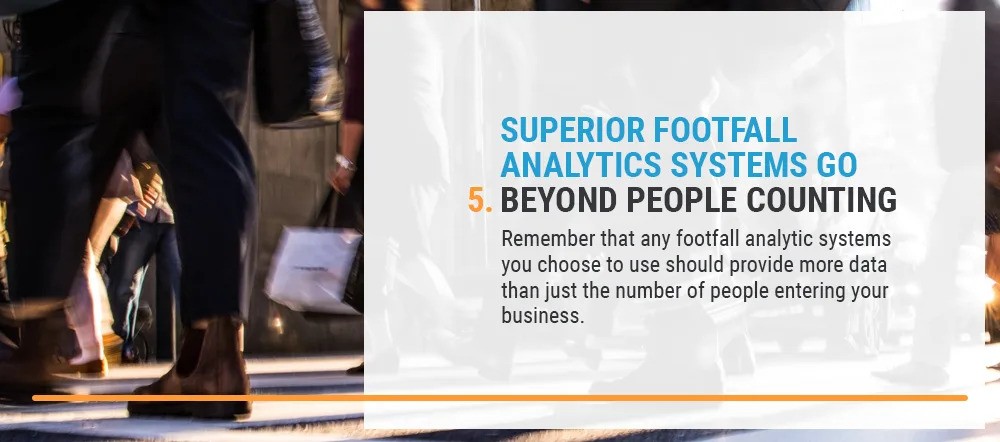

Remember that any footfall analytic systems you choose to use should provide more data than just the number of people entering your business. The tech should measure a range of metrics, including unique vs. repeat customers, how many people walk by your store without entering, time spent in your store and where customers tend to gravitate in your facility.
If you just people count, you’re getting some useful information, but you’re missing out on a wealth of information that can help you optimize your business in a variety of areas, potentially raising revenue and increasing customer satisfaction. Consider that with a basic people counter, you’ll only know how many people enter your store, leaving out info about how many people end up buying something, if you’re generating customer loyalty and the amount of time each person spends in your store.
The information that a basic counter leaves out could be used to help you craft more impactful marketing campaigns and engage with your customers better. With advanced systems, you can tailor them to provide you with more information about key metrics that directly relate to your needs.
Though you might know you have a loyal customer base, you may be interested in figuring out which areas of your store loyal customers tend to avoid. Could you do a better job directing them to try some of your new products in these neglected areas? If you think you could convince repeat customers to branch out in what they typically purchase, you can track the success or failure of your attempts, as you keep a close eye on whether traffic increases in these often neglected areas.
Investing in advanced people counting systems means you’re gaining the edge on the competition and better optimizing your stores. You’re sure to be impressed by the type of insights you gain from the data. Develop bold new strategies by going with footfall analytics systems that go beyond people counting.
Whether you want to know how to calculate footfall in a mall or a single store, you can trust Traf-Sys to set you up with the best hardware and software for your footfall analytic needs.
As a company, we’ve established ourselves as traffic counting experts who take great pride in helping organizations increase conversion ratios, optimize labor, assist with project funding analysis and determine the success of marketing campaigns. We have a variety of people counting systems and accurate people counting software available to a range of businesses and organizations. With these tools at your disposal, you’ll have actionable information at your fingertips.
Get a free quote within one business day by filling out our simple form. If you have any questions, contact us today.